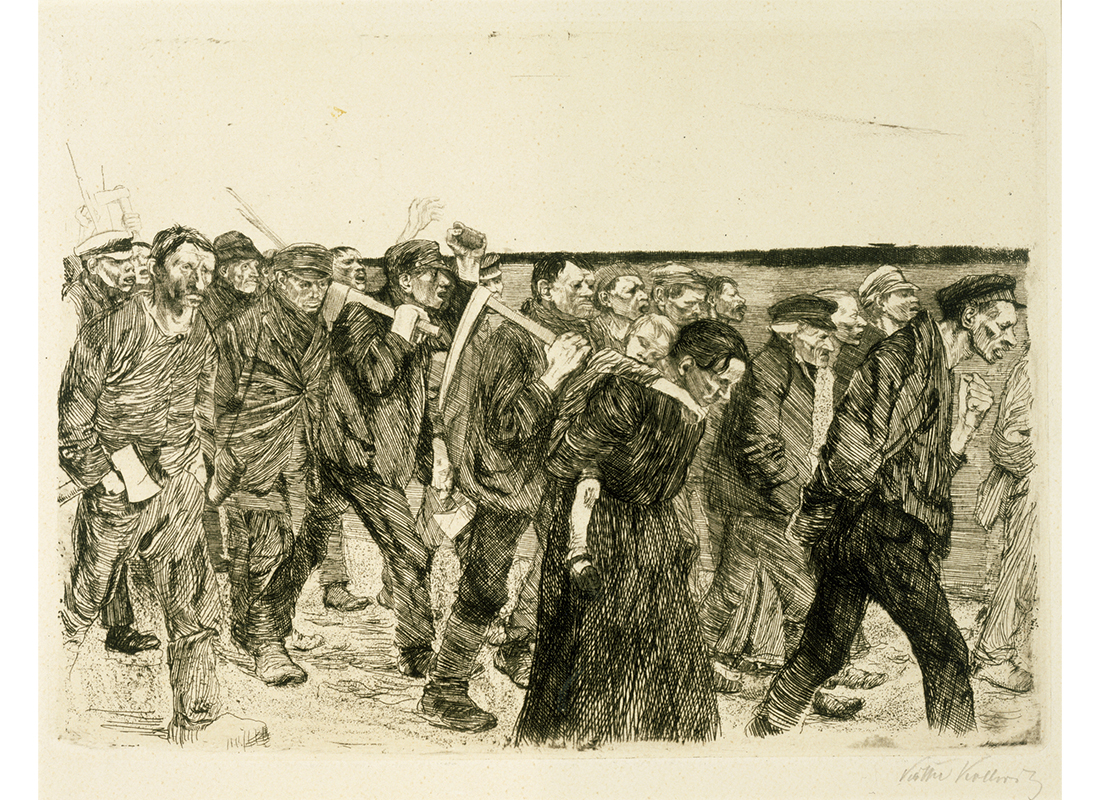
Teaching: Language classes in the Cunningham Center
Guest blogger Judith Keyler-Mayer is a Senior Lecturer in the German Department at Smith College.
My classes and I have been fortunate to benefit from the Cunningham Center for many years and in many ways. I usually bring students of advanced German language and culture (300-level) to “private showings” at the CC towards the end of each semester. These classes are geared towards special topics in German society and history and culture like “War and Peace in German culture,” “Growing up in German Speaking Europe,” or “Made in Germany.”
In the last five years, I worked mostly with Henriette Kets de Vries, who selected and assembled the relevant artifacts and meticulously prepared a custom tailored exhibition of prints for my groups weeks before the actual showing.
It is in the nature of advanced language classes that the students mostly work with a lot of ready-produced texts in written form (i.e. articles, fiction etc). They also might acquire special vocabulary by listening to songs or by watching movies.
There is, however, a great challenge for the students to deal with non-verbal media like pictures, since these require the students to produce their own formulations, without reproducing ready-made building blocks. The confrontation with a selection of prints relevant to the class’s topic gives them the opportunity to perceive their topic in a new way - visually and without words.
For me as the teacher, a lesson in this custom tailored art environment offers an abundance of teaching opportunities in regards to language and culture, or ideally “language through culture.”
After a short introduction given by Henriette the students have the opportunity to closely inspect the 10 to 16 presented artifacts. During the lesson, the students are encouraged to describe and compare the prints, verbalize their own impressions, interpretations, and emotions. Typically, class discussions develop by themselves when students speculate about the artist’s intentions, the cultural relevance of the work and/or its connections to the class’s topic. Sometimes students with knowledge of art history can contribute background information, and Henriette is around to answer specific questions (yes, in German!).
For me as the teacher, these lessons are normally very rewarding, because I can observe how much knowledge and means of language the students have acquired throughout the course, and whether they are able to bring cultural information together and find the connection to the class’s topic.
Beyond direct benefits to the classroom, a visit to the Cunningham Center can have some other desirable side effects, like a welcome break from the class routine. For many students, this is their first visit to the Smith Art Museum, and for some even the first encounter to an art exhibition at all. My hope is that they feel encouraged to have a closer look, get an “eye-opener” or at least an introduction to the language of art and maybe come back again.